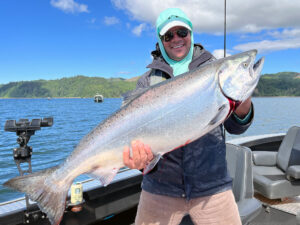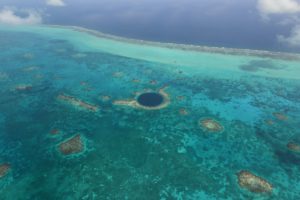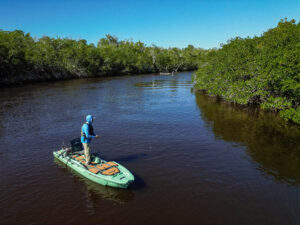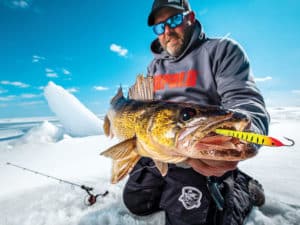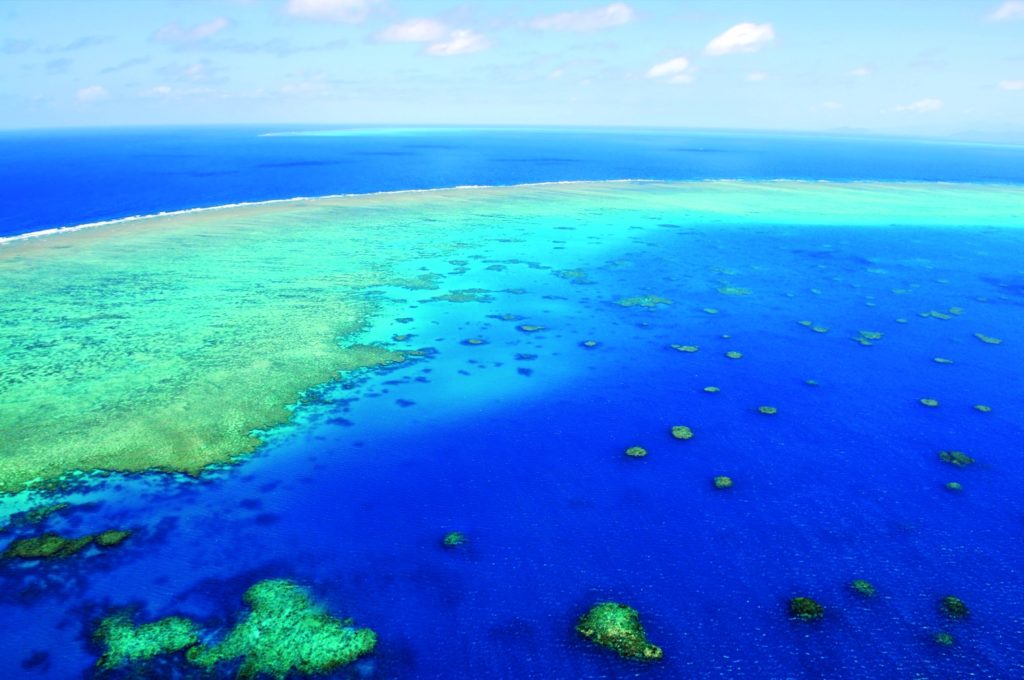
► Game Fish on Steroids Test Our Tackle
“Those fusiliers are looking real nervous!” called out our skipper, Declan Williams, seeing the brightly colored reef fish just below the surface ahead. He eased the 25-foot Contender into position so we could cast from the bow to the edge of a large “bommie,” as coral heads the size of a small house are known in Aussie parlance.
A long throw was called for, but with the stiff breeze at our backs, Vince Ward’s 8-inch wooden popper went the distance, trailing 50 yards of 80-pound braided line. I was right behind the Las Vegas angler, firing out a smaller Nomad MadScad stickbait on 50-pound braid.
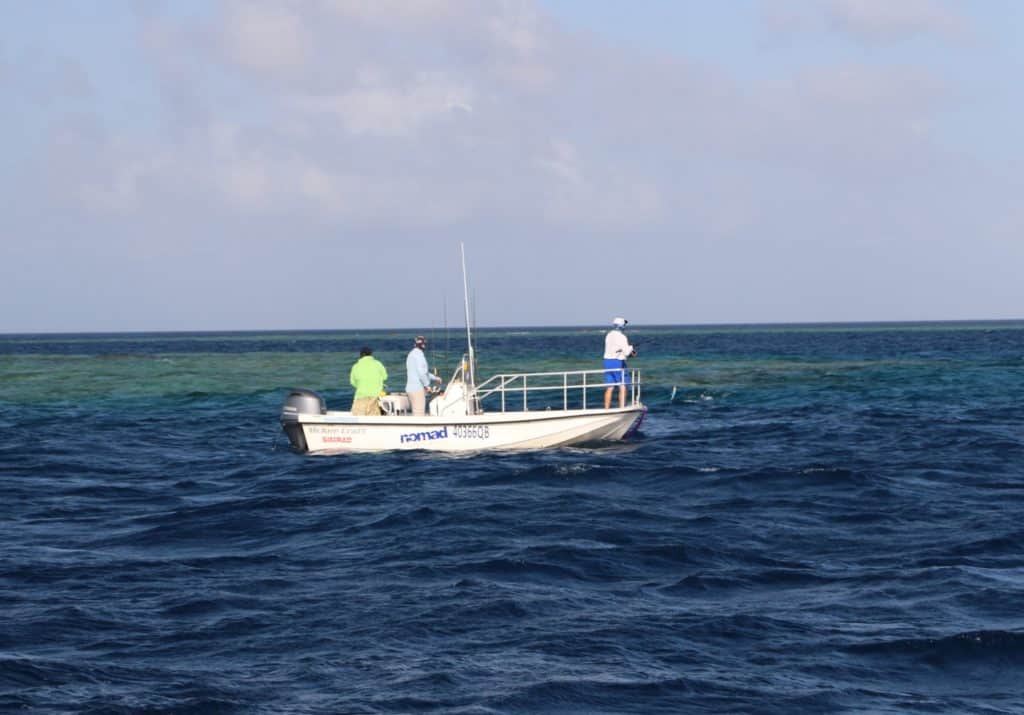
Even as my lure sailed out, I saw dark shadows materialize as if by magic at the edge of the bommie, their broken shapes moving under the chop. They were all heading the same way: right toward Ward’s lure.
But I knew this was not a place to take my eyes off the prize, so I focused keenly on my stickbait the moment it splashed down. As I started working back the lure with short, hard jerks, I heard Ward scream and glimpsed him pressed up against the gunwale.
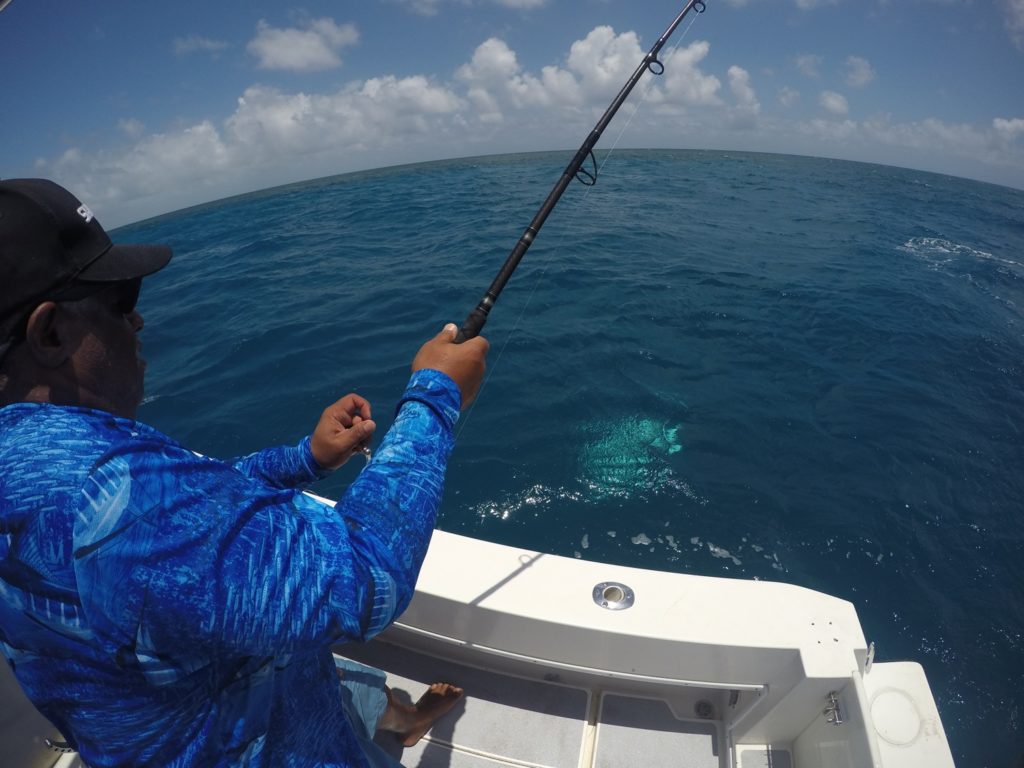
With 80-pound braid and a locked-down drag, even a really big guy like him had to muster his strength to stay in the boat while trying to keep 60 or 70 pounds of giant trevally (GT) from muscling its way right back into the coral.
Even though my lure was far off, I could watch the drama unfold around it in the clear waters. Most of the ominous, large, dark shapes that had vied to attack Ward’s popper seemed to immediately focus on the frantic dashes of my stickbait. But before one nailed it, something exploded underneath, and at once the rod was bucking in my hands.
Williams was yelling something about an airborne Spaniard (the common name Aussies use for narrow-barred Spanish mackerel).
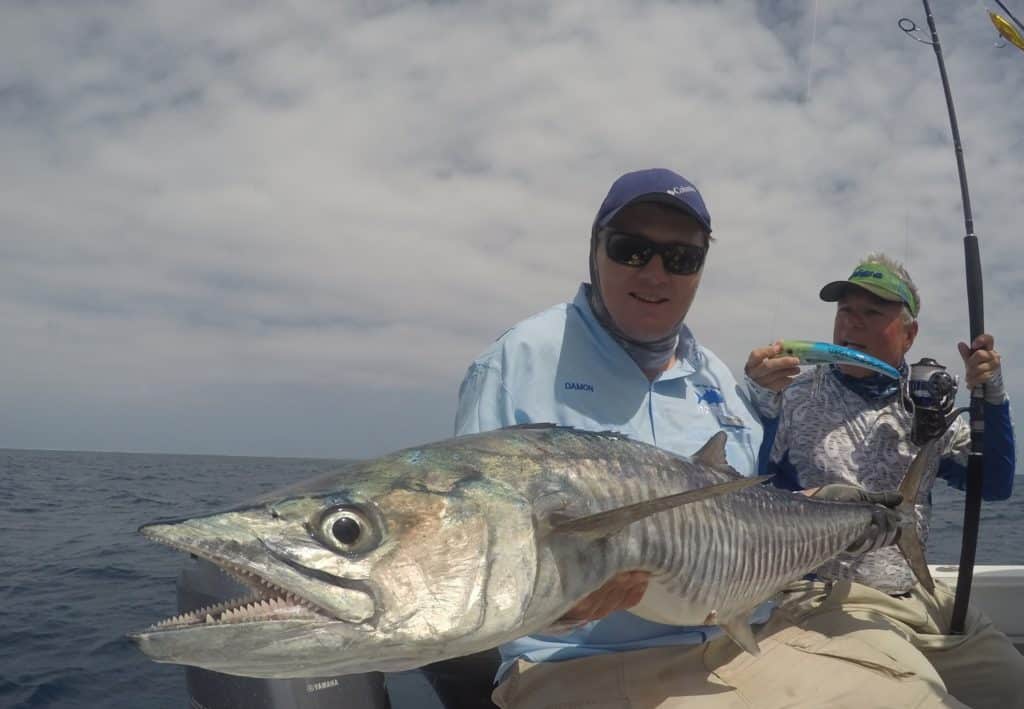
“Narrowbarred mackerel are incredibly exciting game fish, but around the lush coral and the passes transecting it that mark the upper/outer Great Barrier Reef, they’re but one of many sensational predators that render this one of the most exciting sight-fisheries on earth.”
► Big Fish Prowl the Reef
This sort of action is about as good as fishing gets. That’s because there’s no approach to our sport as exciting as seeing fish track and run down a lure or fly.
In a nutshell, from a sight-fishing perspective, the waters explored by the mothership Odyssey out of Cairns have it all: 1) lots and lots of fish, and 2) game fish that by any standard are beasts. Whatever their size, these predators are generally powerful and fast — giant trevally to 100 pounds and more; bright green-blue Maori wrasse the size of a Kawasaki Ninja; lightning-fast narrow-barred mackerel; brutal coral cod (long, fast grouper that prowl shallow reefs); red bass (an amazingly aggressive, toothy snapper); many other types of trevallies, including goldens and bluefins; and many types of groupers and snappers as well.
And the best part: All of these are species that will readily rush up to grab poppers, shallow-running stickbaits and soft-plastic swimbaits, often competing to be the first to do so.
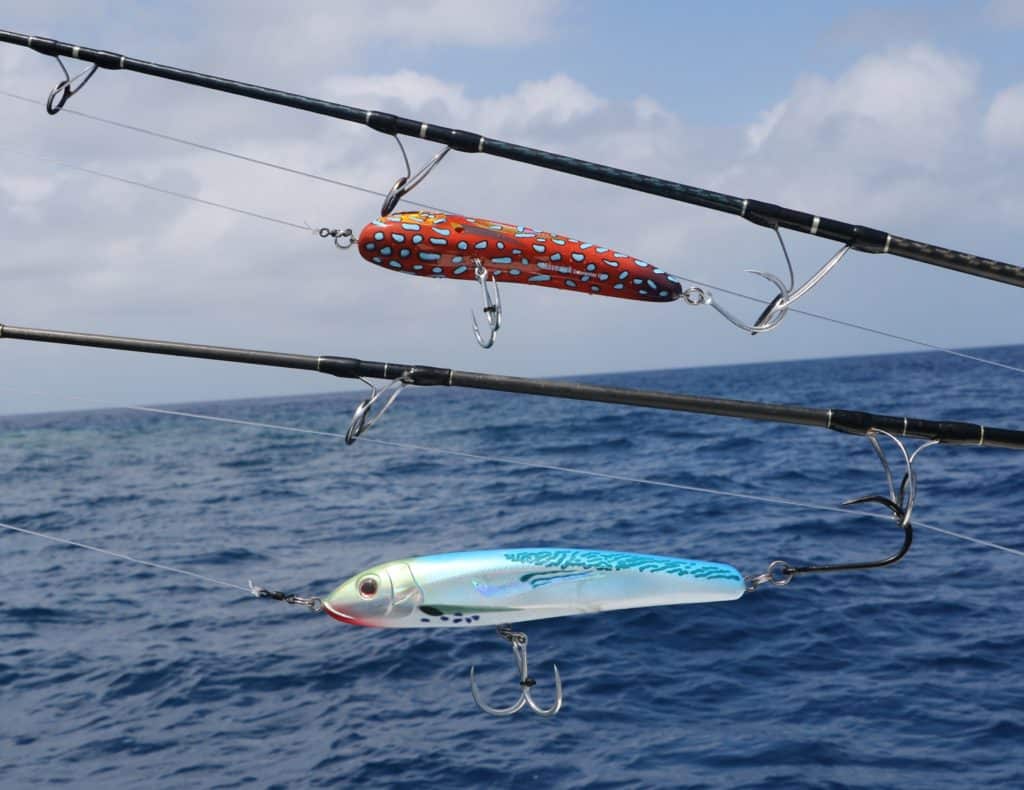
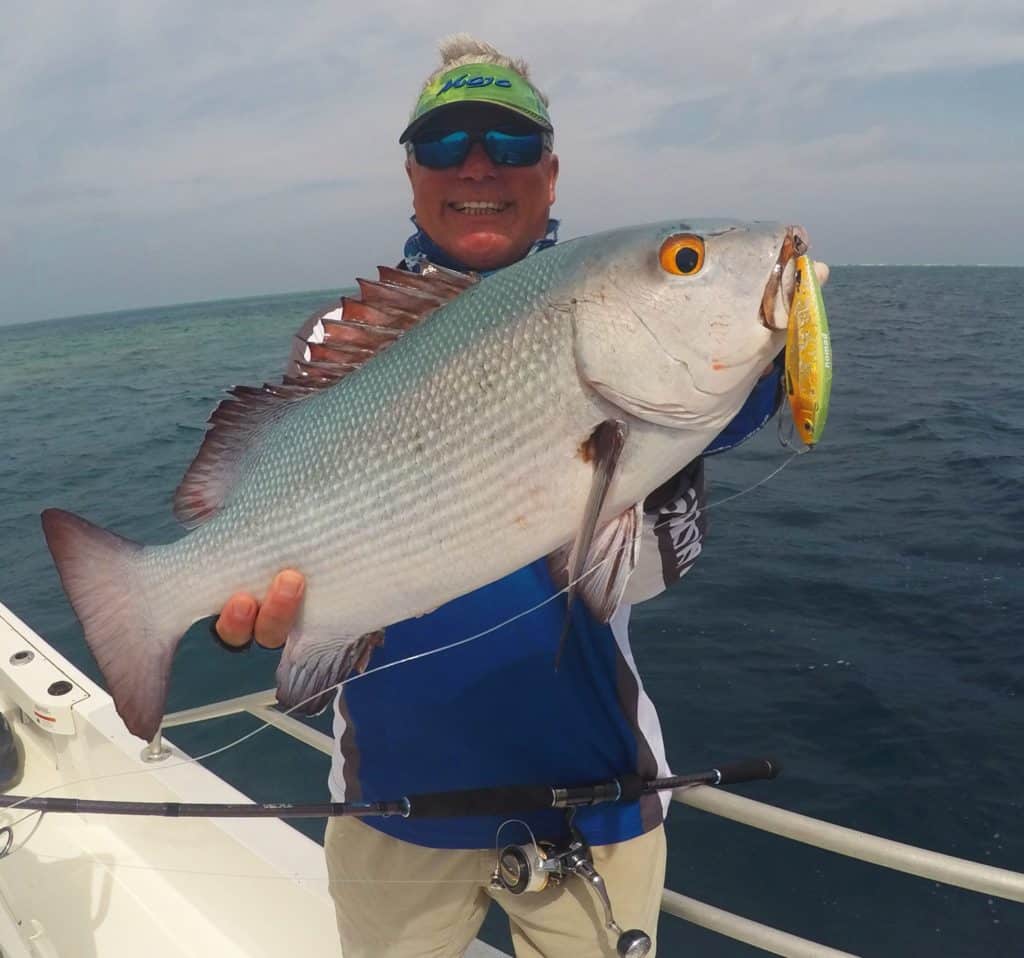
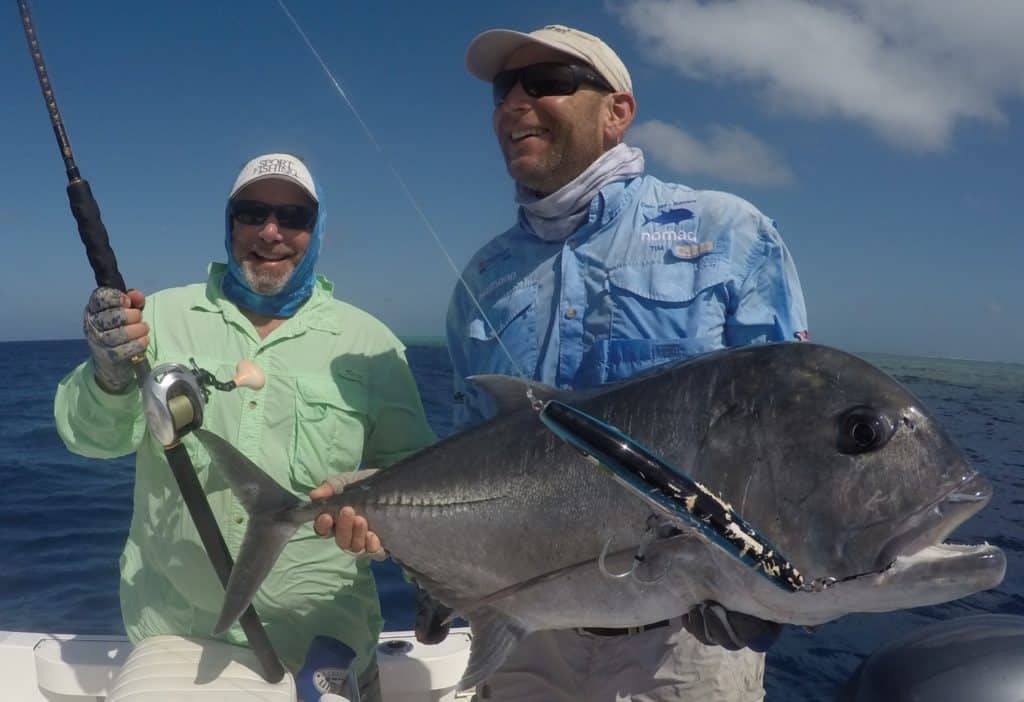
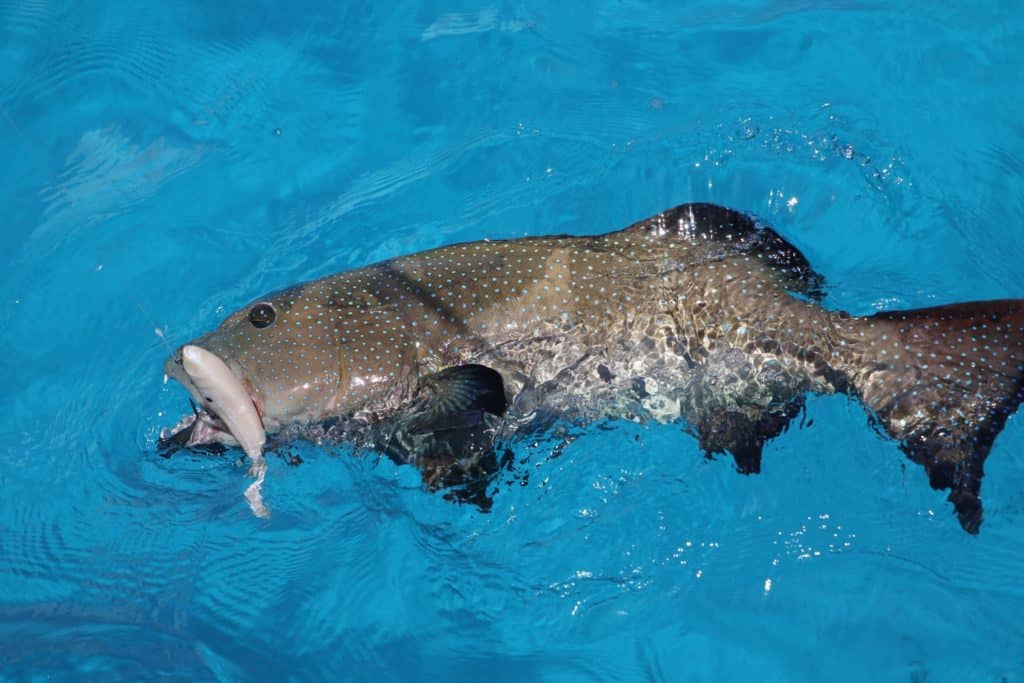
Rather than try to share here all the cool game fish that will and, for us, did snatch various lures during this trip, visit the related gallery, 20 Fabulous Game Fish of the Great Barrier Reef that I’ve compiled, with images of those fish. The variety will amaze you.
► Nonstop Fishing Action = A Real Adrenaline Rush
It’s very hands-on fishing (versus trolling or drifting bait), points out Capt. Damon Olsen, who oversees the operation of Nomad Sportfishing Adventures and the Odyssey.
But believe me, it’s not fishing for the faint of heart. Given the size and power of these fish, things happen fast. Think nonstop adrenaline rush. That’s one reason the Nomad operation doesn’t encourage the use of fighting belts. “This fishing is just too tough,” says Olsen. “There’s no time to worry about getting a butt into a gimbal or cup.” Doing so often makes it hard to keep up the all-important pressure.
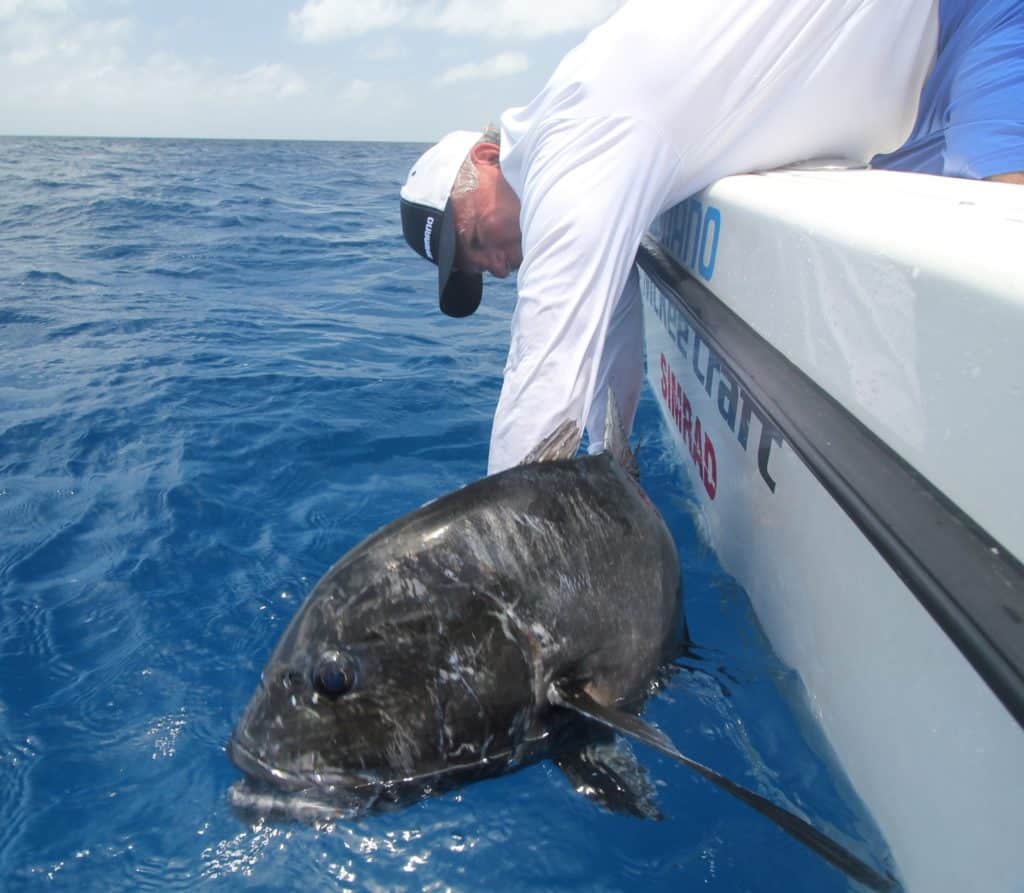
As quickly as the skipper hits neutral near a bommie or series of reefs or channel edge, anglers are in position and begin casting. Action may come quickly and can happen at any moment. When it does, in most cases a hooked fish will immediately dash headlong back to the coral. If you consider yourself a finesse fisherman, you’ll quickly find you’re in the wrong place. You either stop that fish right now or kiss it — and your lure — goodbye. It’s as simple as that in most cases.
Certainly, anglers get their butts kicked regularly every day. Even with 80-pound braid, some fish are just too big and powerful to be persuaded away from the reef. Often the skipper will back off quickly, which helps the angler, but even that may not be enough.
That this is not a light-tackle fishery ought to be pretty clear. If you want to actually land any fish and not lose all your gear on day one, 50-pound braid is a reasonable minimum (though often you’ll wish you had stronger).
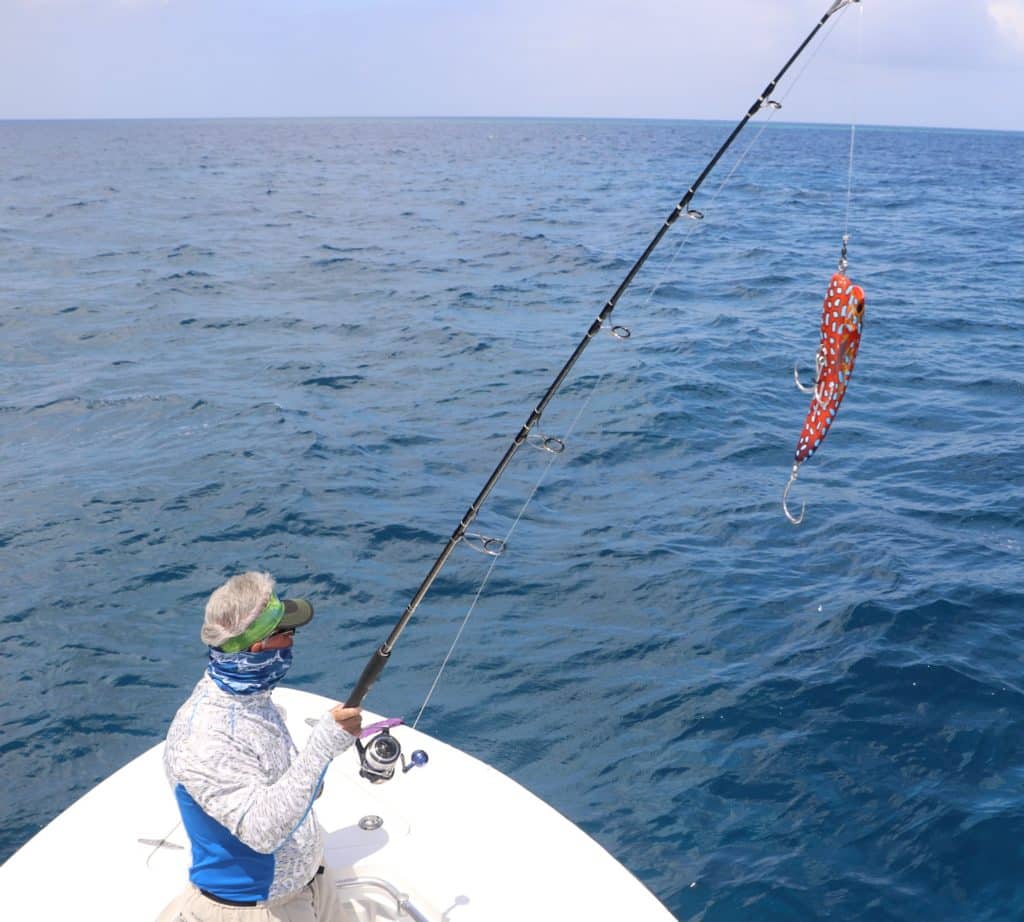
Nomad Sportfishing Adventures, which owns and runs Odyssey, has outfitted the boat with top-notch tackle suited to the task: Starting on day one, the 80-foot custom cat’s ultrawide transom bristles with a couple of dozen larger Shimano Stella spinners and Terez rods lined up in vertical rod holders. Given that each outfit is worth in the neighborhood of $1,500, it’s a pretty impressive collection.
► Fishing Flats and Shallows Between the Coast and the Great Barrier Reef
To be sure, there are reefs in many other Indo-Pacific areas that offer similar fishing. But these reefs generally lack the sort of fabulous opportunity to fish them that Nomad Sportfishing Adventures provides, with a very experienced crew providing one captain per every three anglers on each open skiff or center-console, dedicated to putting anglers on the water and wearing them out on fish all day every day.
While most of that action happens on reefs, as described above, we enjoyed other fisheries as well on our trip to the Claremont Isles, on the distant Northern Great Barrier Reef.
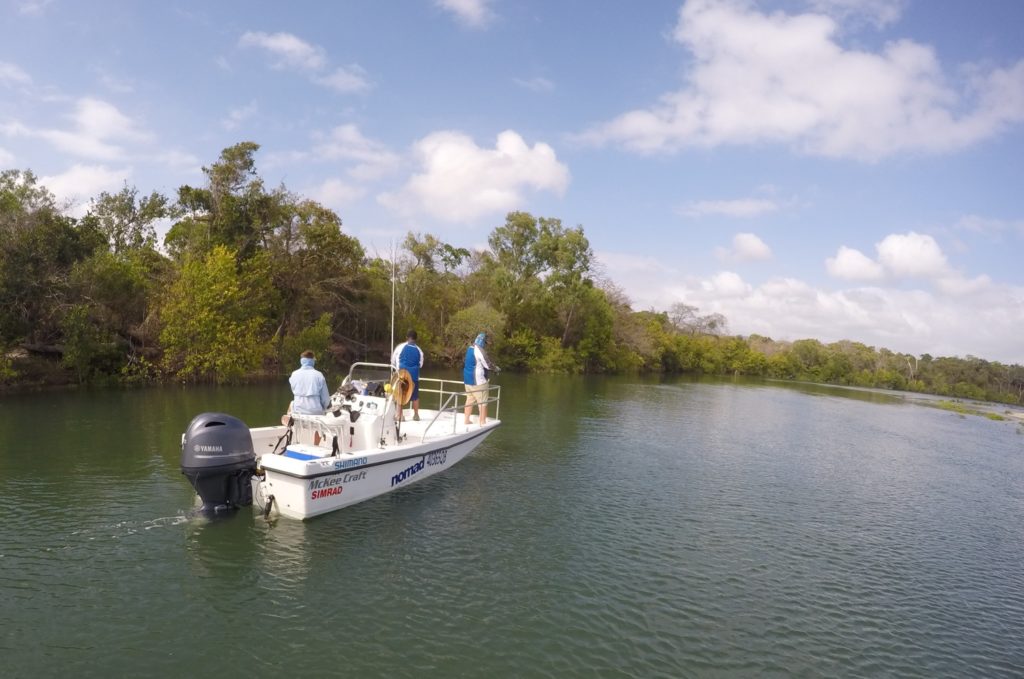
After leaving the river, about midday, we spent the afternoon fishing sandy shallows near the coast (versus 25 or so miles farther out, where the main reef is located).
“The Claremont area is one of the few places where we can do that kind of flats-fishing and catch queenies [queenfish], goldens [golden trevally], permit, [Pacific] tarpon and blue bastards [see “Australia’s Most Elusive Game Fish of the Flats?” later in this article],” says Olsen. And here, 30-pound braid on somewhat lighter spinning outfits is ideal.
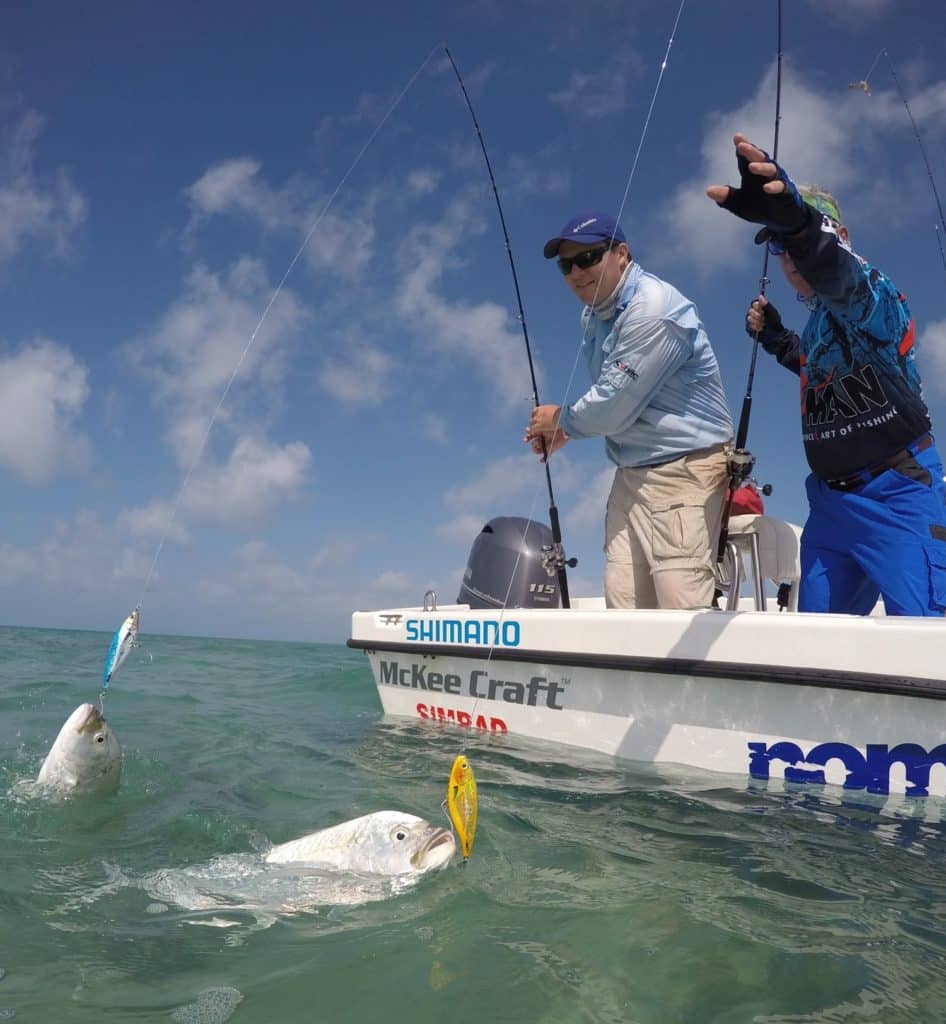
Once the tide started in, Olsen had one of Odyssey‘s two 18-foot McKee Crafts positioned so we could watch predators moving across the flat. Throwing smaller Halco poppers and Z-Man paddletails, we seldom made more than a few casts without a strike, including from many of the fish mentioned above, plus GT, coral trout, bludger trevally, mangrove jack (an Indo-Pacific version of western Atlantic gray snapper) and more.
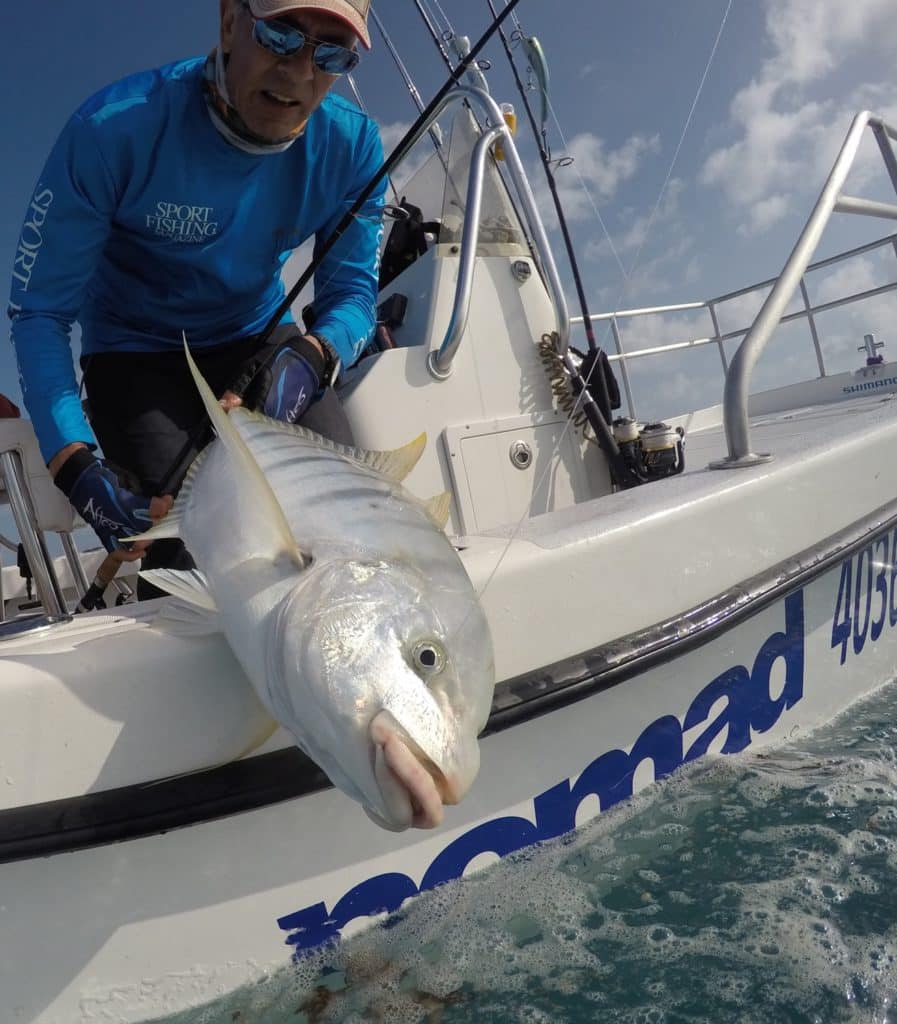
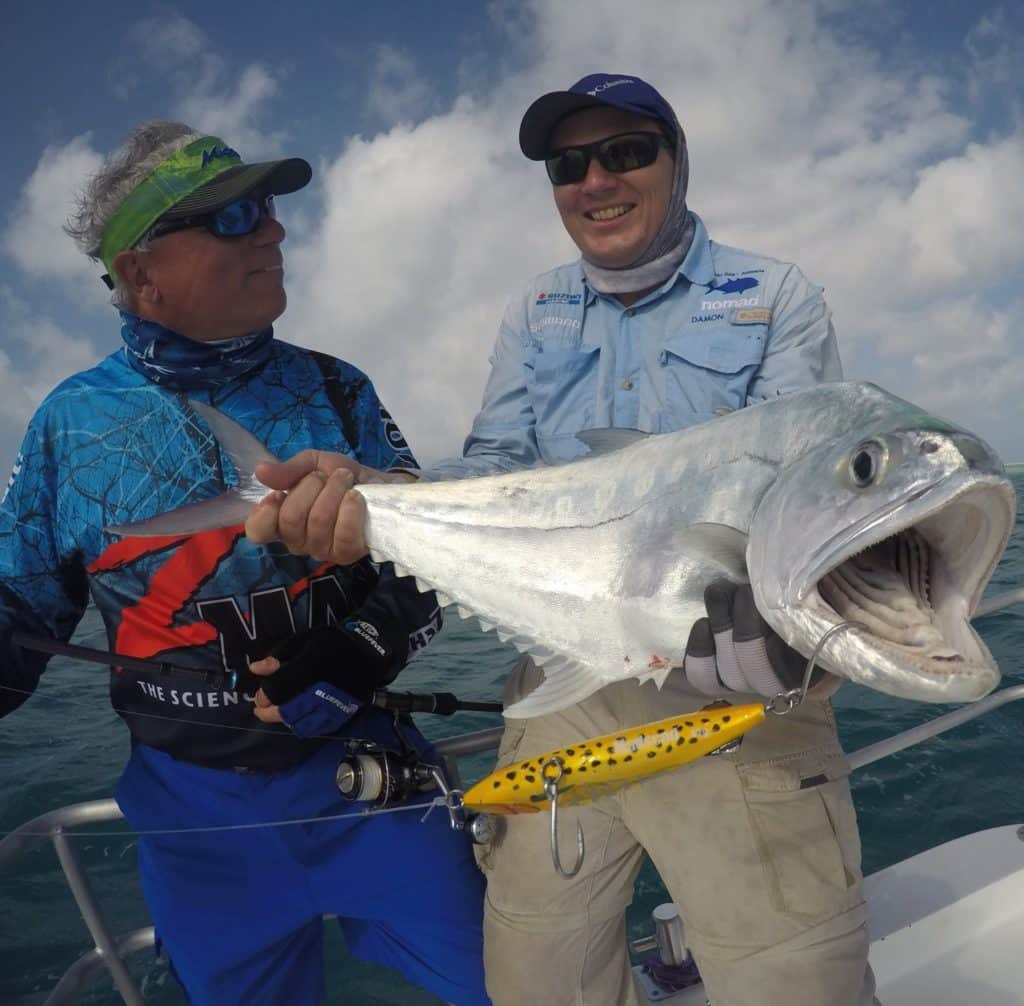
► Surprise Marlin and More in Deep Channels
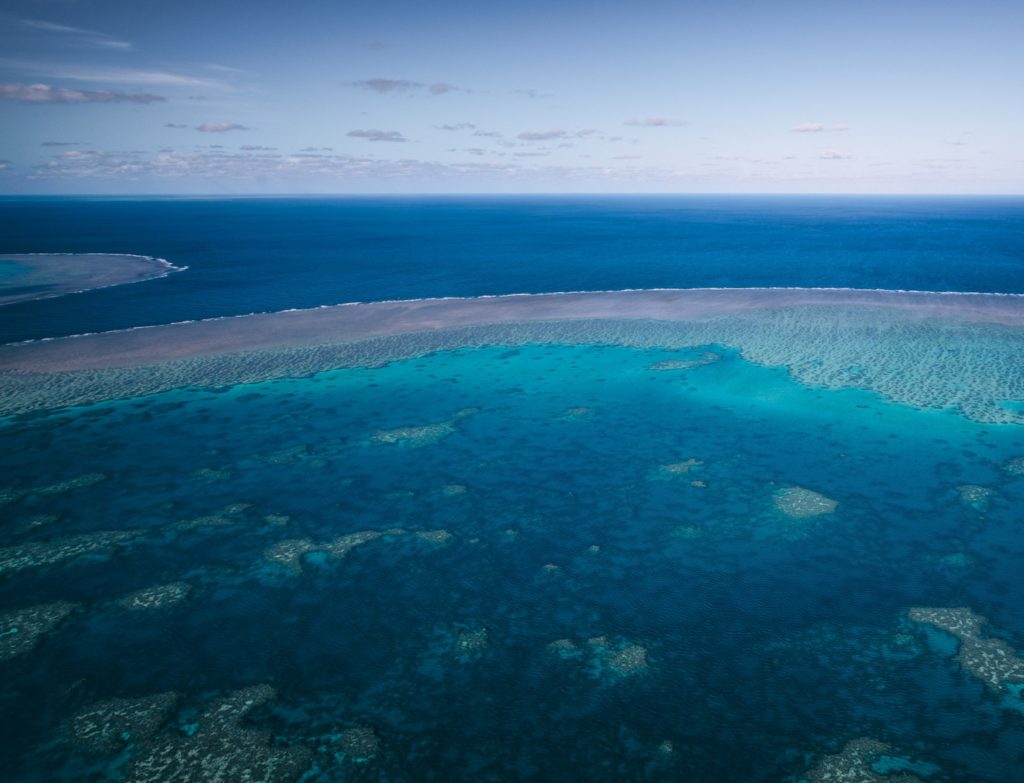
Yet another alternative to fishing behind the barrier reef and bommies is trolling the channels that cut through the reef. These are very deep and steep, particularly on outside edges, and currents roar through them. That makes them ideal dogtooth tuna habitat. Trolling large deep-diving lures with 100-pound braid can produce vicious strikes from these solitary predators.

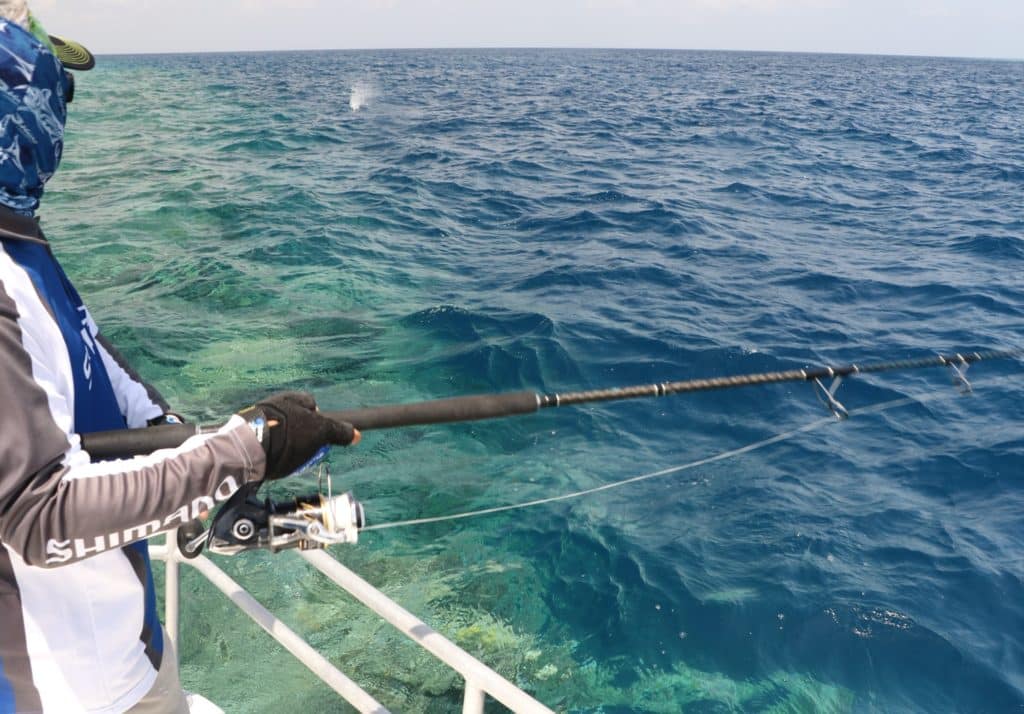
If the Pacific isn’t too cantankerous, anglers can cast in from outside the reef to where surf is breaking against the hard reef edge; in this rugged habitat live some of the largest GT. Just be ready for arm-wrenching strikes. Or they can scoot into a channel and work poppers along the steep, current-swept walls.
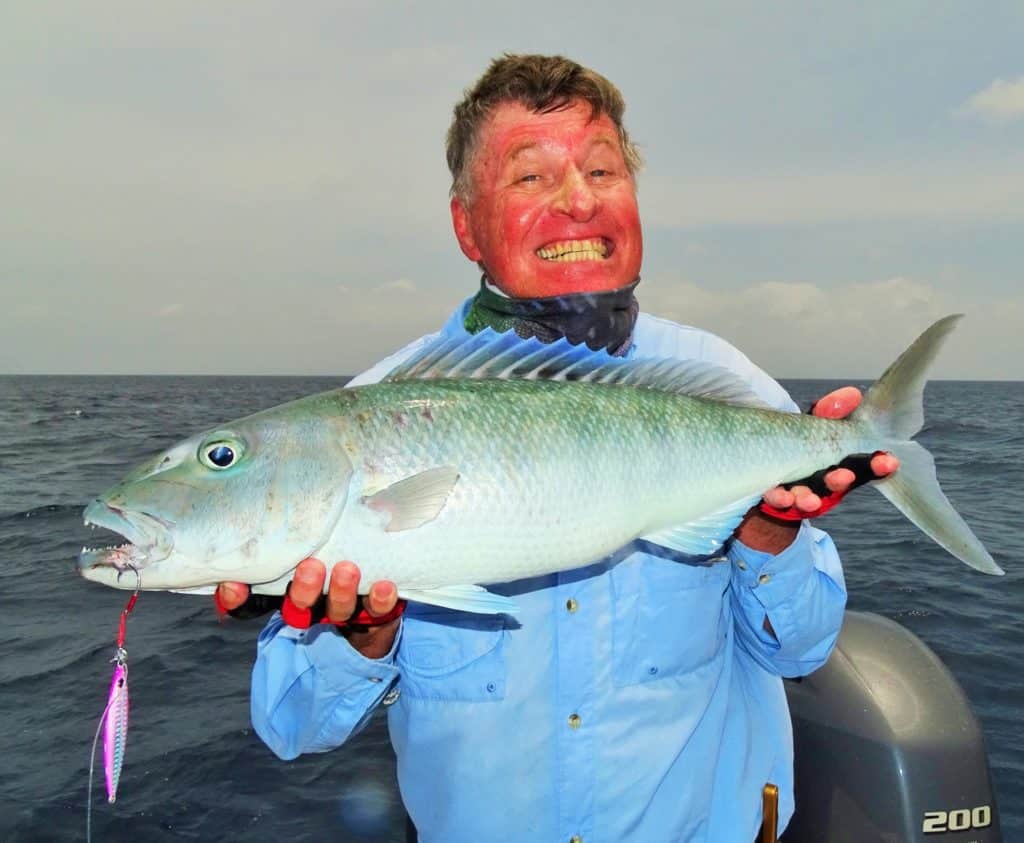
Trolling in the passes can also produce trophy narrow-barred mackerel; I’ve seen them to about 75 pounds. And it may yield other surprises. We were in one of the Contenders working an outer pass with Capt. Tim Baker, pulling lures through the big swells at 5 knots, when one of the two Tiagras went off. My fishing partner, George Large, grabbed what we figured would be his first dogtooth of the trip.
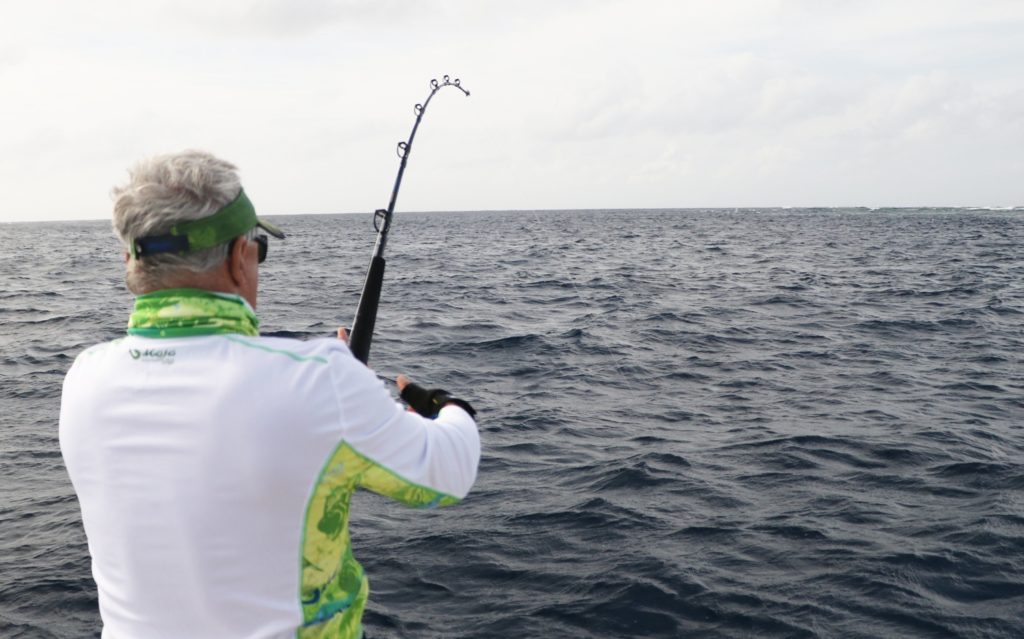
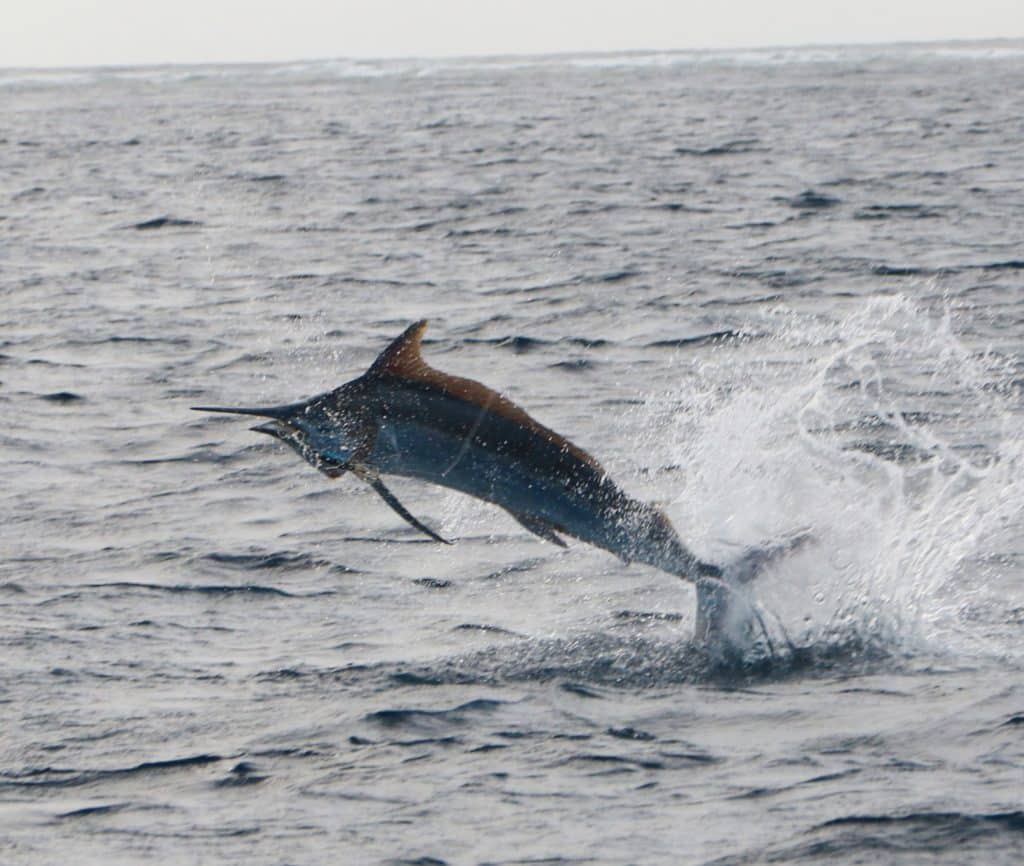
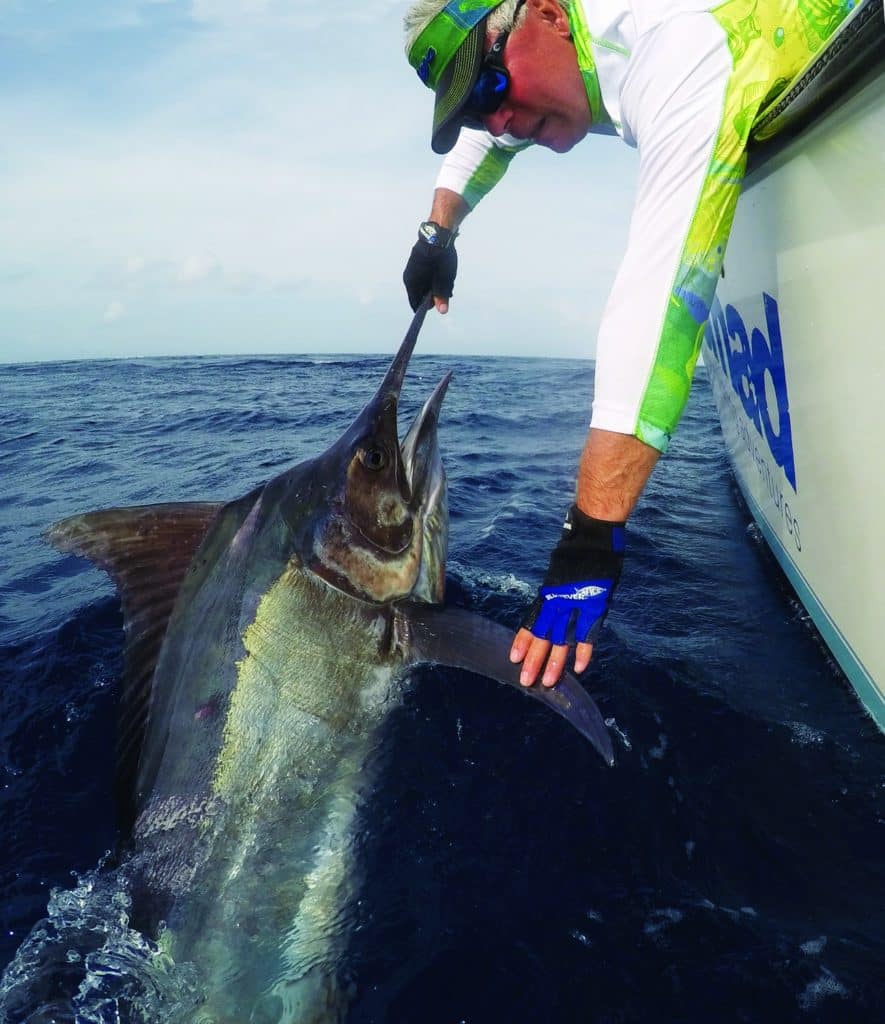
► Heart-Pounding Action Casting Lures to Coral Heads (Bommies)
During most of our time on this trip, the wind blew. In fact, wind is a fact of life much of the time out here. Fortunately, waters near the reef flats offer comfortable enough anchorages, and fishing around the reef offers water calm enough to be comfortable.
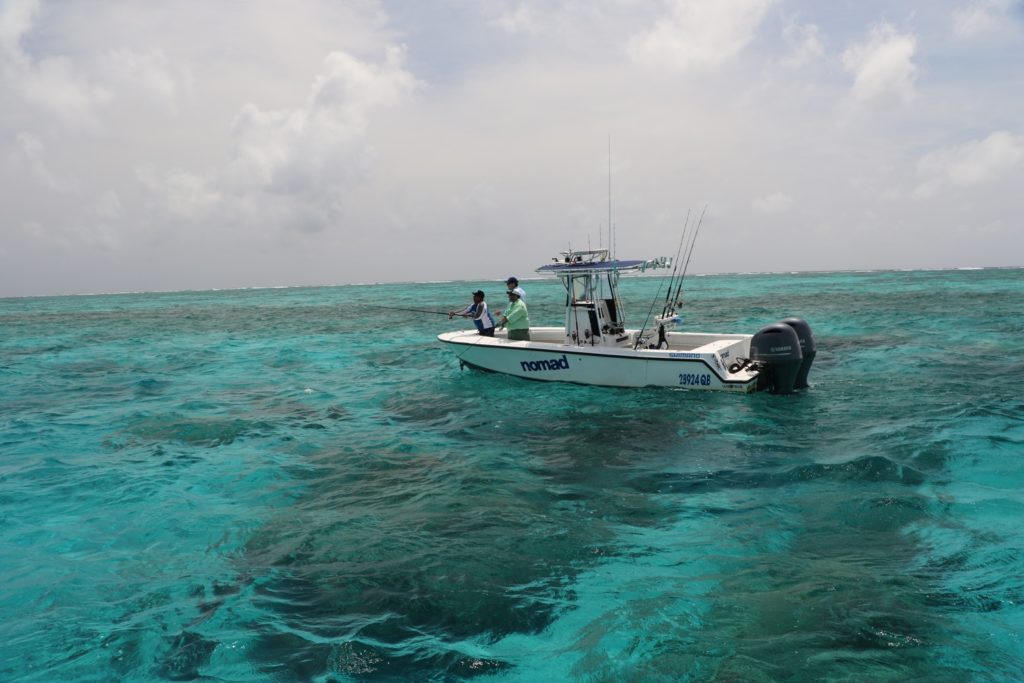
That wind can also be a plus. When at an angler’s back, it helps throw lures long distances to the edge of bommies. Long casts nearly always generate more strikes because they cover more ground, but, perhaps more importantly, they also allow your lure time “on the run” to attract the attention of followers. Yet that distance is a double-edged sword, because having more line out and a shallower angle from your rod helps fish find cover — at which point, as a rule, the show’s over until you can get rerigged and start casting again.
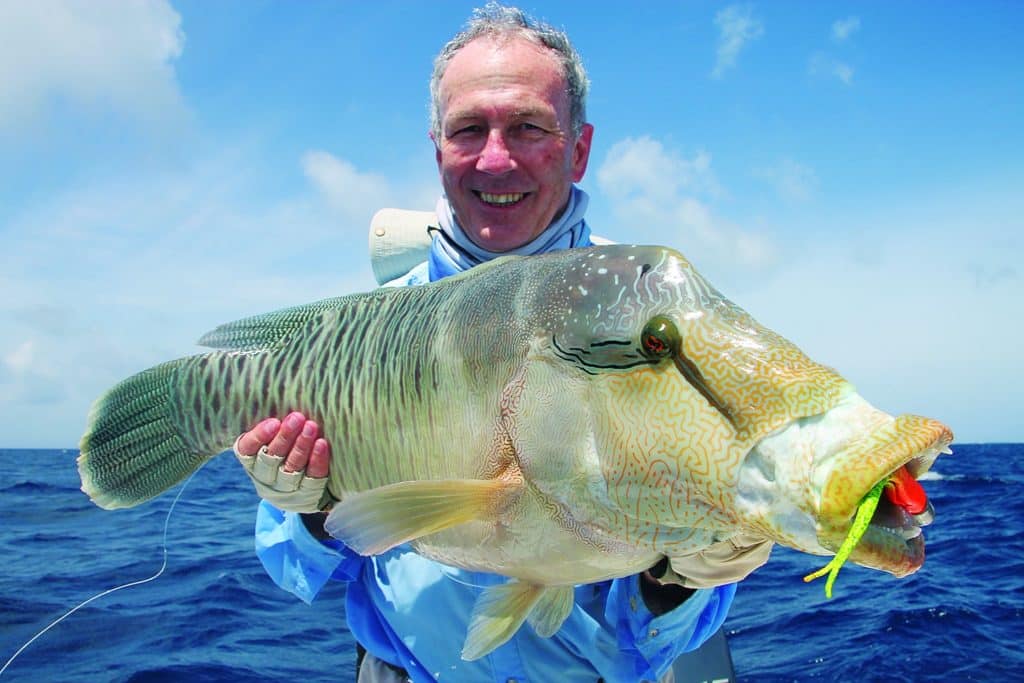
In most instances, the angler at least has a chance. But that’s not always the case. Baker recalls one day when the water was flat (versus the incessant low chop we fished in) and ultraclear. “An absolutely huge bright green-and-blue Maori wrasse — it could have been upward of 200 pounds — came straight up from an opening in the top of a big coral bommie,” Baker says, long enough to inhale a big popper and immediately return to its lair. “There was no possible chance to stop that fish,” he says, no matter what sort of tackle the angler had been using.
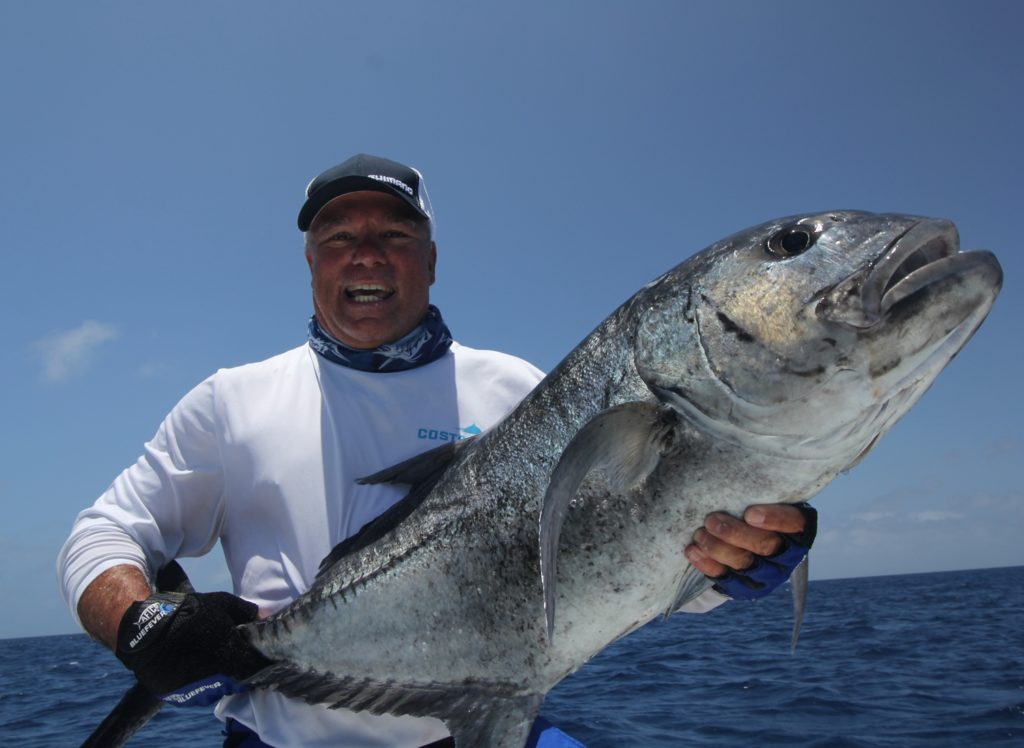
Our last day was both the windiest and the best day. Odyssey had moved overnight down the reef to a new area with excellent dogtooth passes. Williams tried to get the Contender into those channels since we had yet to catch a big dogtooth, but standing waves against the ebbing tide made it unfishable. Instead we ran in — away from the reef and toward the mainland — for a few miles, then began bommie-hopping. It seemed that most of our casts to the large, isolated coral heads, rising to near the surface from 30 to 60 feet, rang the dinner bell for big, nasty predators of many types, which materialized from the coral to chase down our lures.
We seldom lacked for action, and no angler on that trip will likely forget those sights and those fights. It’s definitely fishing at its most exciting.
► Australia’s Most Elusive Game Fish of the Flats?
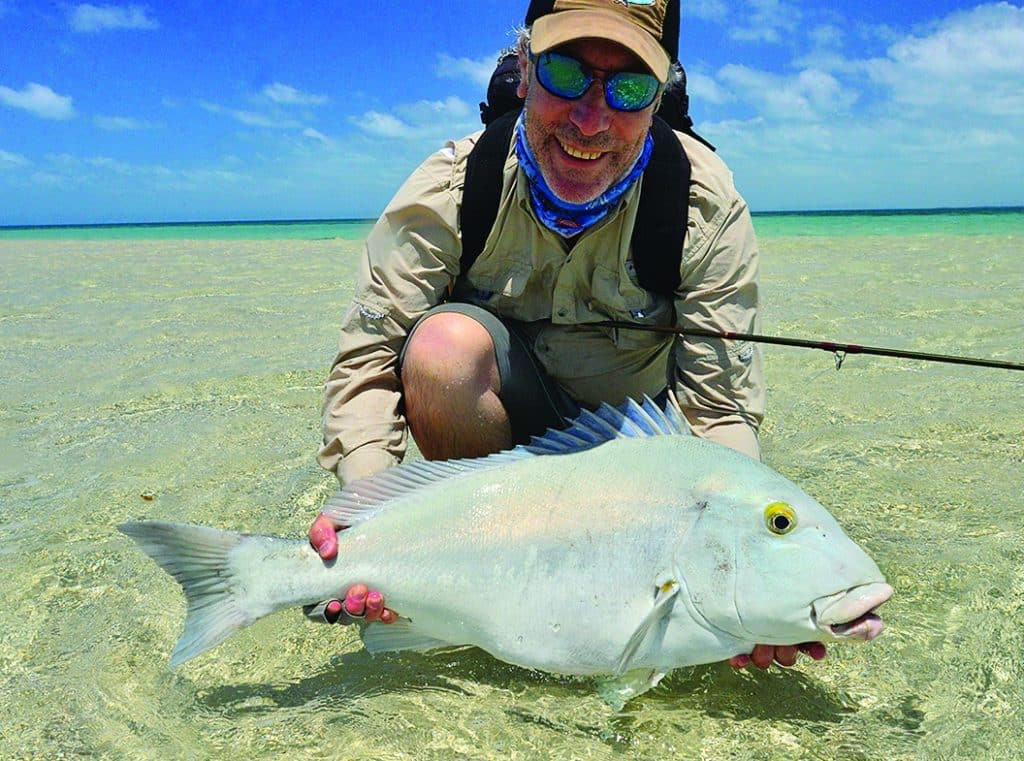
Permit, move over for the blue bastard. Granted, permit are one of the toughest game fish to target in clear, shallow waters. But in the sandy shallows of northeastern Australia swims a species of grunt that grows to 3 feet in length. Its light blue coloration makes it hard to spot, and it’s so skittish that permit seem bold by comparison. Making it all the more intriguing, scientists did not identify the species until 2015 (though it does not yet appear at fishbase.org). We did spot a couple, but couldn’t get close enough to put a soft plastic in front of one. (I suspect our odds would have risen sharply if we’d had some live shrimp.)
► Best Practices, Lures and Hooks for Sightcasting the Great Barrier Reef
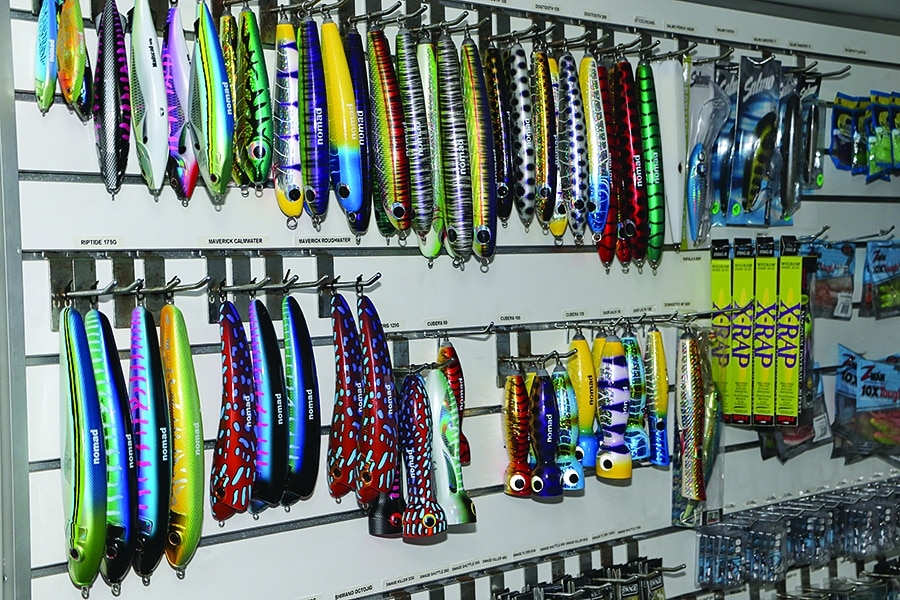
I wouldn’t care to come back in the next life as a lure fished around northeastern Australia reefs. Figure on great abuse by brutal jaws and a very short life span.
Fortunately, Odyssey‘s onboard tackle shop has plenty of lures. They’re not cheap, but they are purpose-built from the ground up: Damon Olsen has designed a line of lures under the Nomad branding that definitely catch fish out here — in fact, they work so well that they’re also big sellers around much of Australia, and within a year or so should be available in the United States.
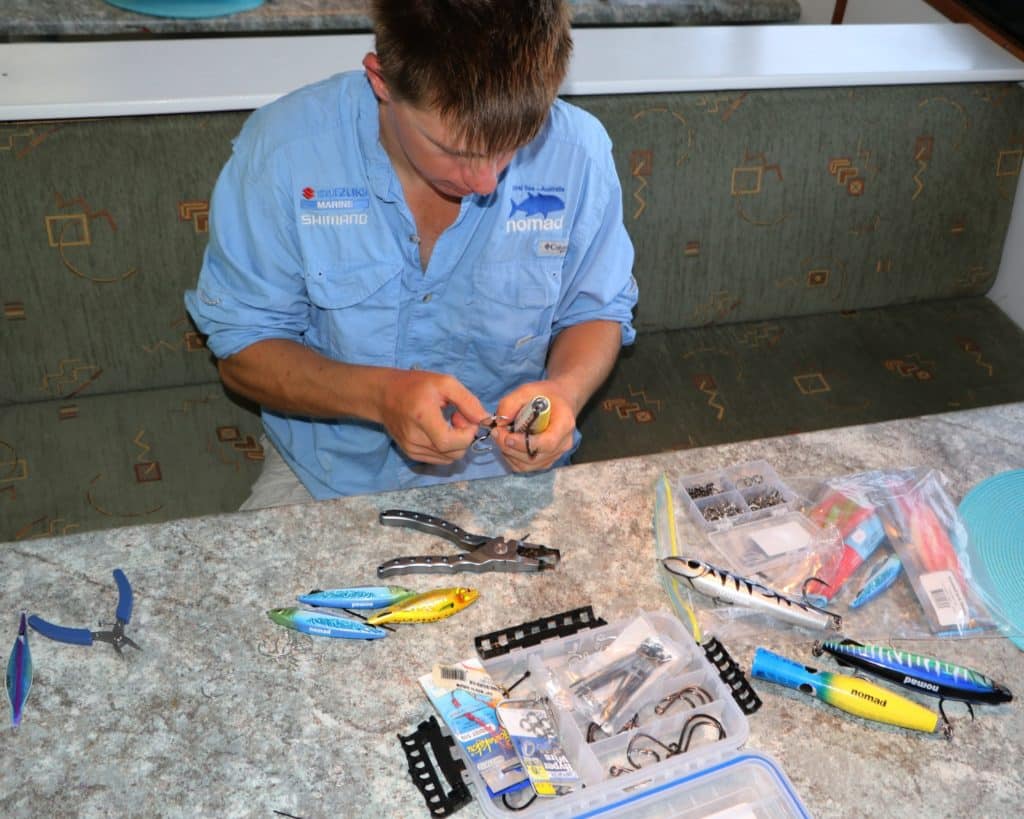
Having fished the Nomad line of lures extensively on the Great Barrier Reef and elsewhere since then, I can attest to their effectiveness. But equally important is their durability (whether wood or plastic, all are through-wired and have extra-strong hardware, including metal plates in some designs) and the fact that they come with single hooks.
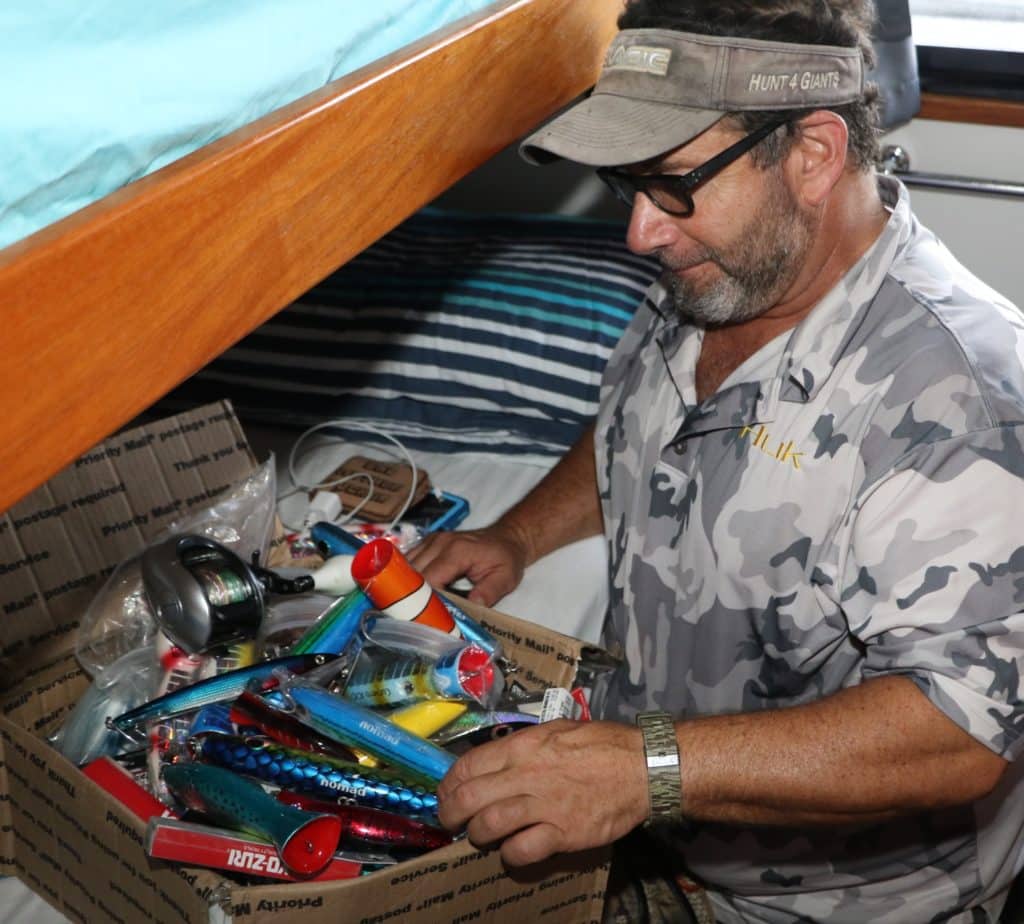
Many anglers booking on Odyssey do as we did, bringing some lures and buying others on board. We had great success with lures like Halco’s venerable Roosta Poppers, Sebile Splashers and Stick Shadds, and Shimano Orca stickbaits. But whatever lures an angler brings, it’s vital to swap out trebles with in-line singles.
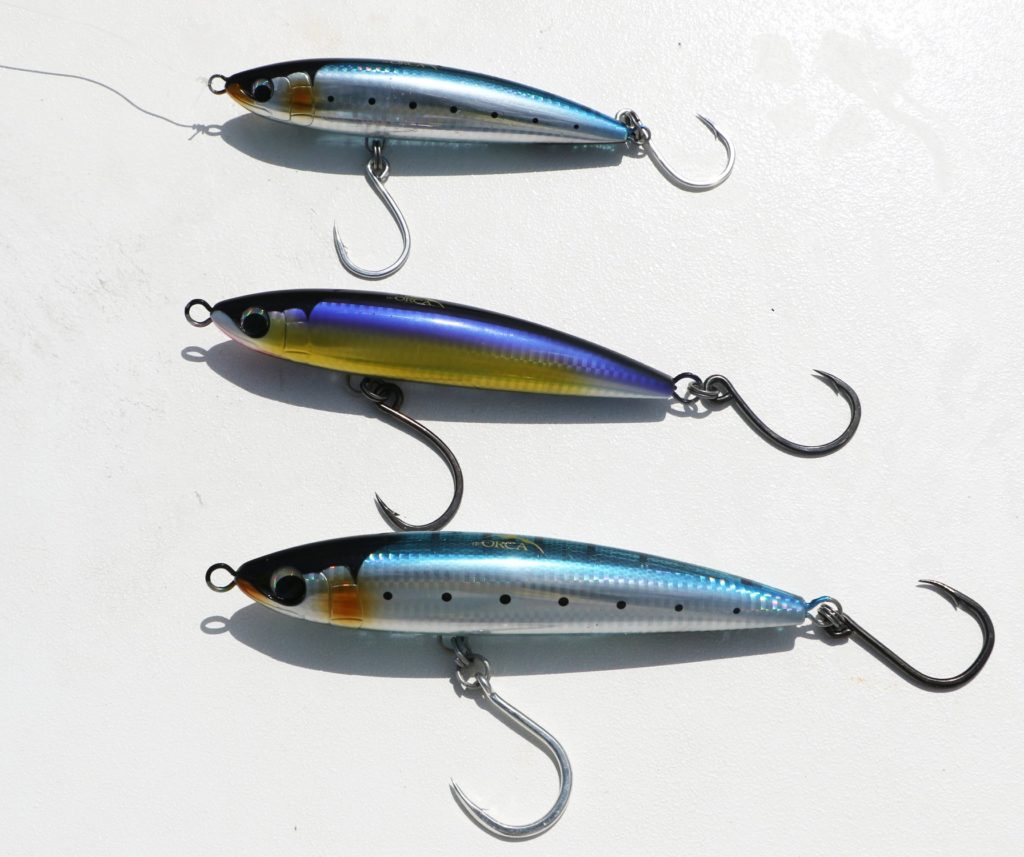
More and more hook manufacturers are selling in-line hooks. They’re designed to hang correctly from the lure’s split rings (which often warrant changing out also, to stronger versions). Nomad’s rules forbid trebles because nearly all fish are released unharmed; plus, with fish this powerful, unhooking them boat-side with a lure bearing six sharp points poses considerable risk.
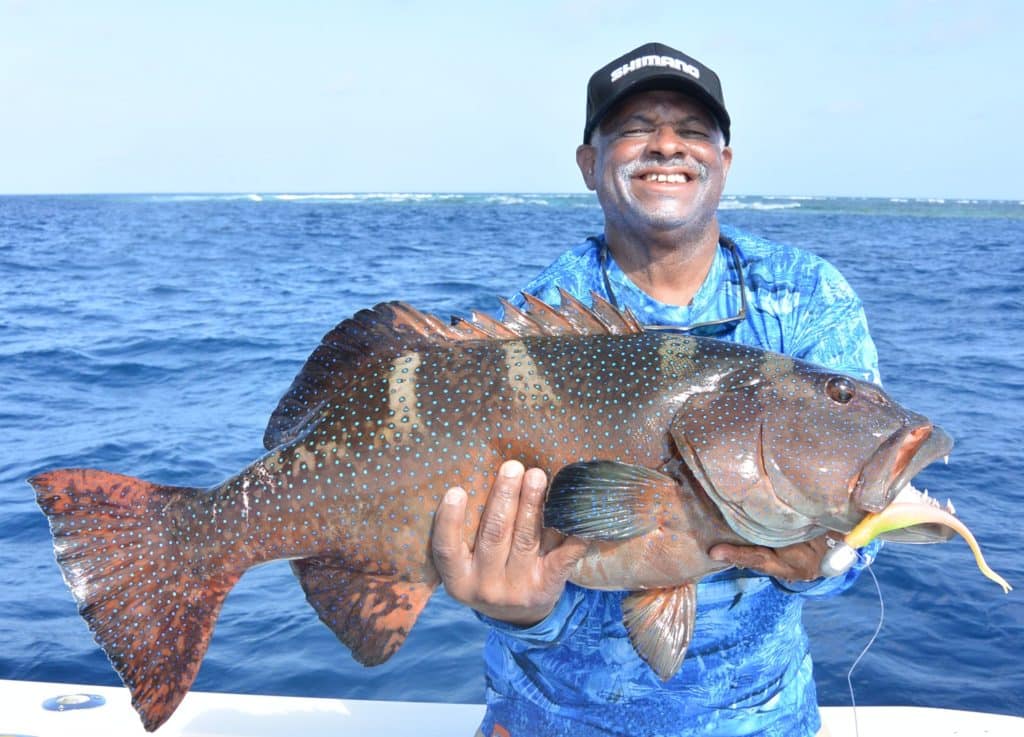
► Planning the Adventure of a Lifetime with Australia’s Nomad Sportfishing
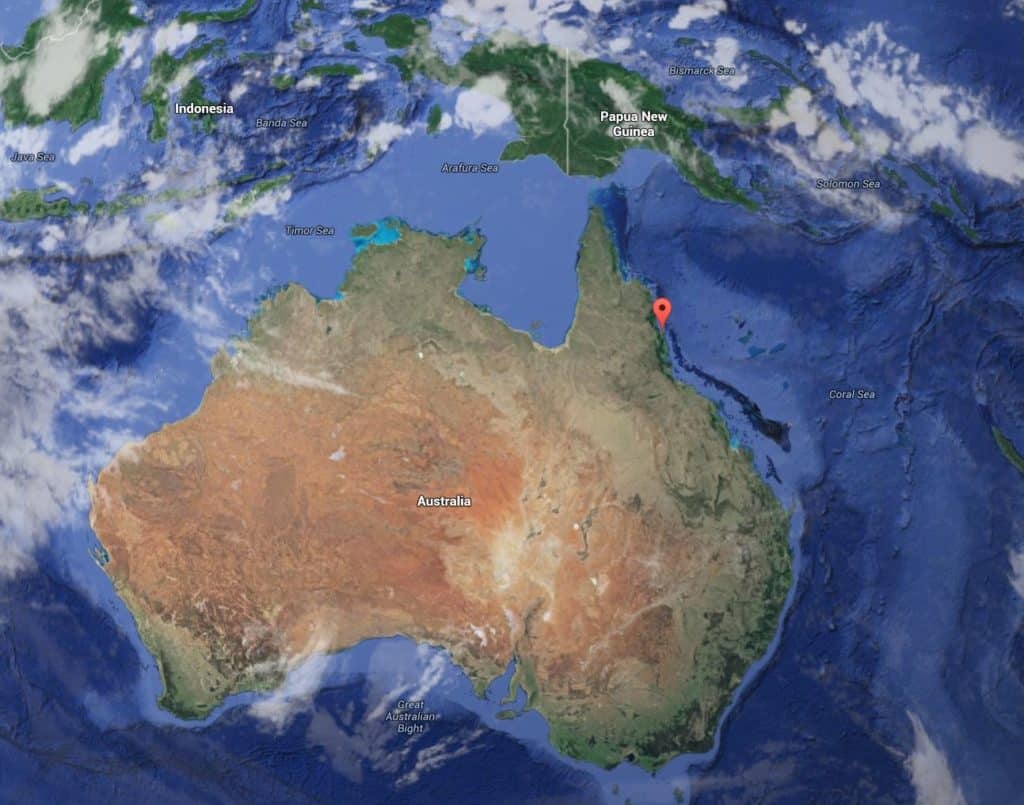
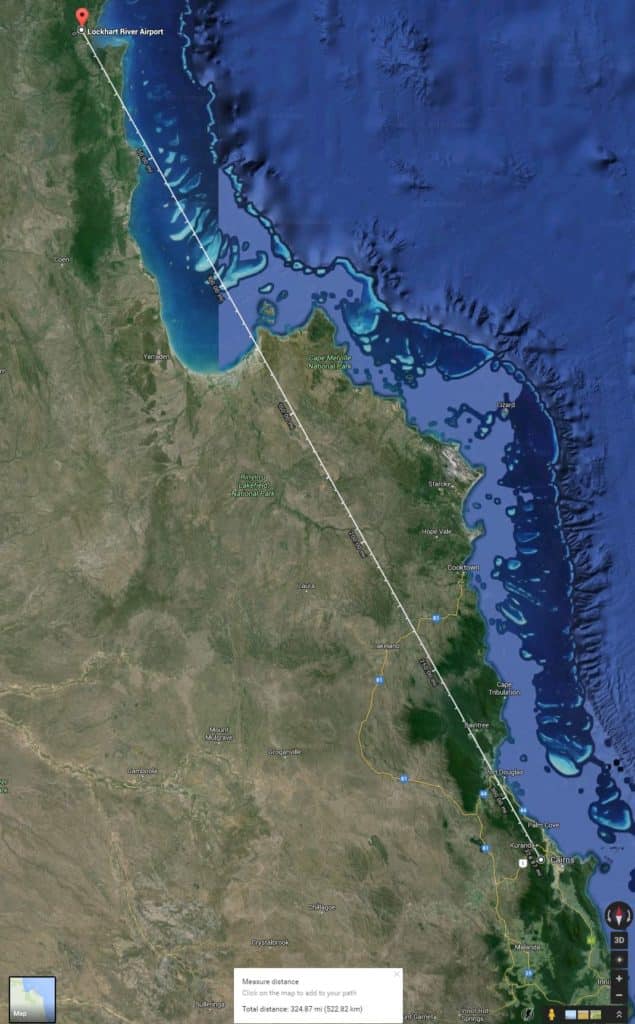
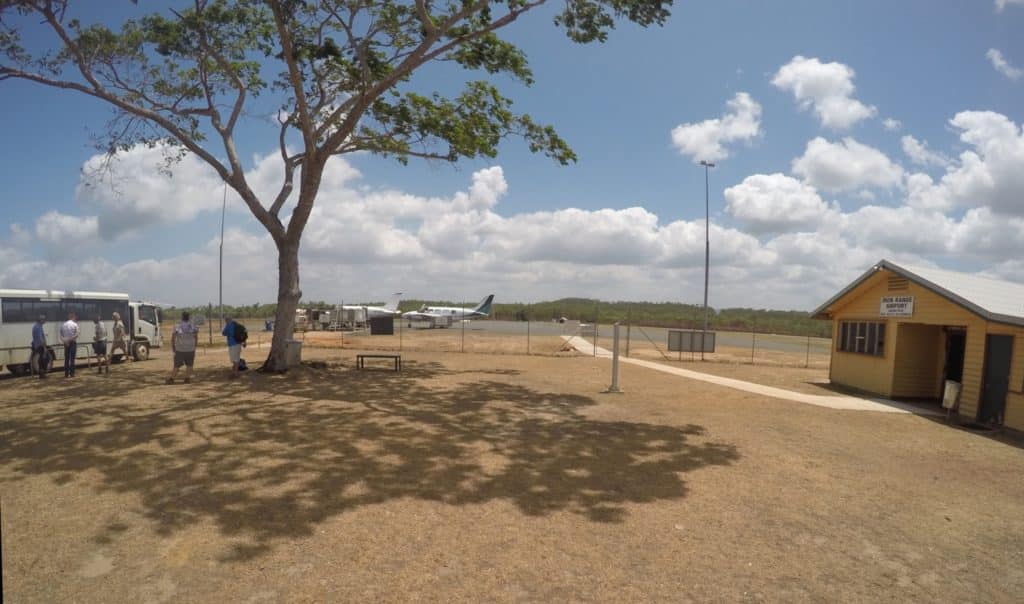
What to bring: Perhaps more appropriate is “what you can bring” — which is not much. Daintree Air is emphatic about a maximum 20-kilogram (44-pound) total baggage allowance. (Despite that, a few anglers gambled they’d be allowed a good bit more, and they were.) So beyond the clothing and personal necessities, including a camera and books, choose your tackle carefully. Some anglers had sent gear to the Nomad office in Cairns ahead of time and had it waiting on the ship, but from the U.S., that’s a pricey proposition.
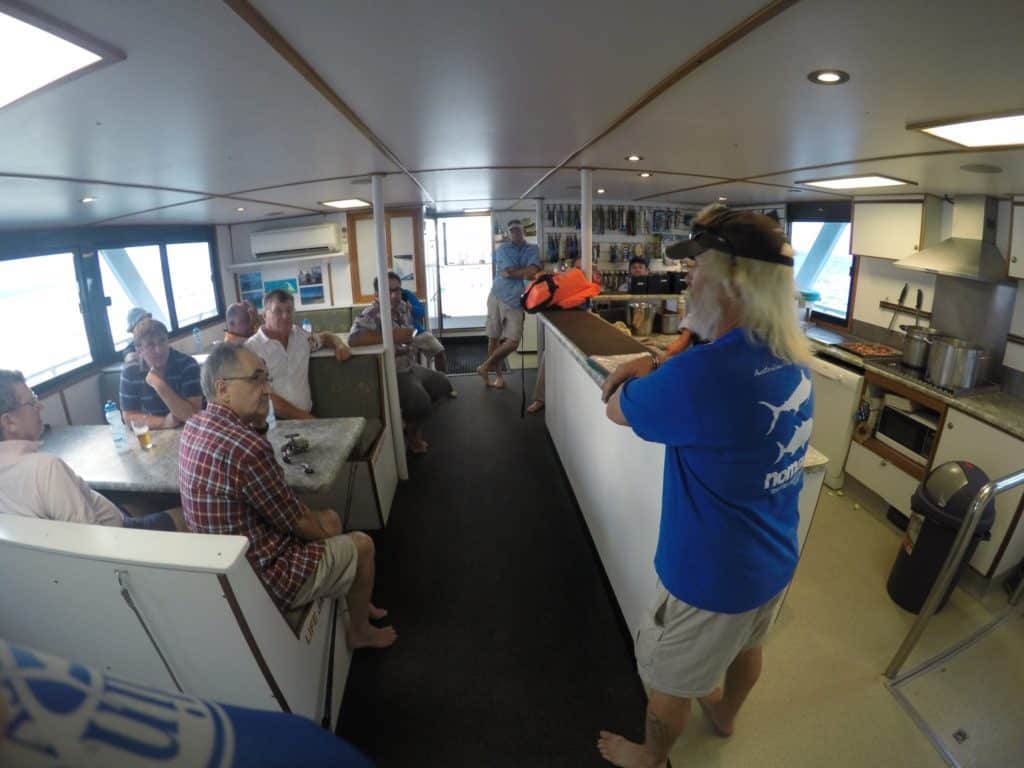
On board Odyssey: Six air-conditioned staterooms accommodate two to four anglers each, with two shared heads. The 80-foot aluminum catamaran has a serious reverse-osmosis watermaker, so showering and plenty of pure drinking water are not problems. Meals are, as one might expect, outstanding.
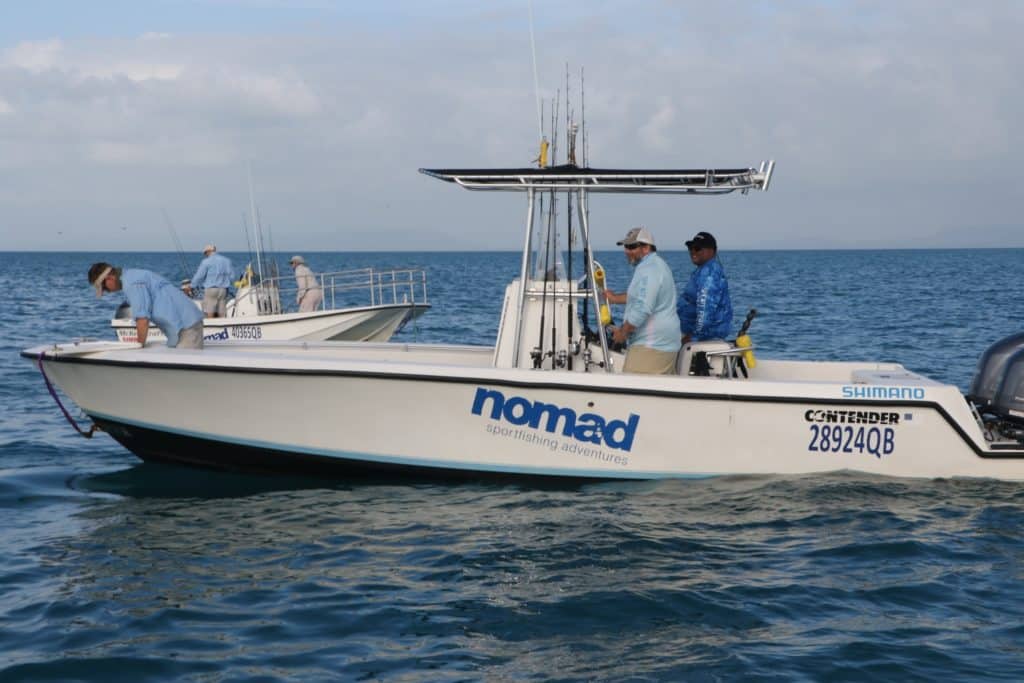
What does it cost? This could be likened to inquiring about the price of a Porsche 918 Spyder: “If you have to ask … ”. Though the operation has many repeat clients, certainly for many it’s a once-in-a-lifetime bucket-list adventure. Either way, the Claremont Isles trip, with six days of fishing, is listed at $5,500 USD (which is in fact in line with more-upscale fishing resorts), plus the flight up the coast and bus transfers totaling around $700.
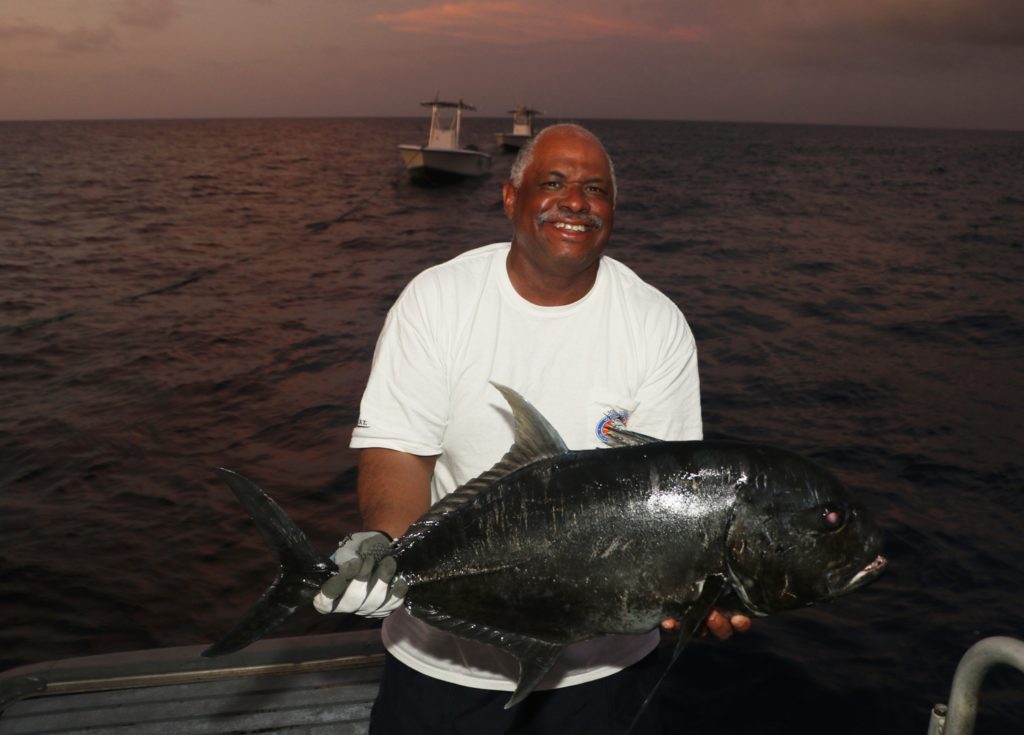
For more information:
- Nomad Sportfishing Adventures
- Pullman Cairns International (upscale hotel in Cairns)
- General information on visiting Queensland

